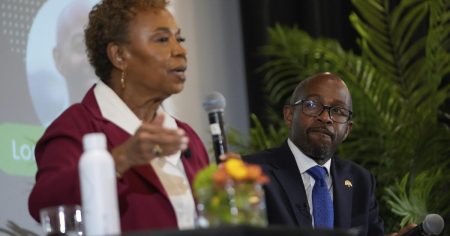The Federal Reserve Holds Steady on Interest Rates Amid a Strong Economy
The U.S. Federal Reserve has signaled that it is in no hurry to cut its short-term interest rates again, citing a strong overall economy with low unemployment and inflation that remains slightly above the central bank’s 2% target. In prepared remarks delivered at a Senate Banking Committee hearing, Federal Reserve Chairman Jerome Powell emphasized the progress the economy has made over the past two years. He noted that the current 4% unemployment rate is near the level considered to be full employment, and while inflation has eased, it still remains more than half a percentage point above the Fed’s target. Powell reiterated the importance of patience, warning that reducing policy restraint too quickly or by too much could hinder progress on controlling inflation—a sentiment echoed after the Fed decided to hold interest rates steady at its January meeting.
The Economic Context and Powell’s Senate Testimony
Powell’s testimony marked the beginning of two days of hearings on Capitol Hill, as the Fed continues to grapple with the impact of policies enacted and expected from the Trump administration on an economy that, by many measures, is already performing well. While Powell declined to comment directly on the Trump administration’s tariff policies, he acknowledged that there have been challenges on the trade front. The Fed’s cautious approach reflects its commitment to carefully balancing the risks and opportunities presented by the current economic landscape.
Market Reaction to Powell’s Remarks
Markets reacted modestly to Powell’s comments. The S&P 500 dipped slightly by 0.15%, though the decline was less pronounced than before his remarks were released. In the bond market, the yield on the benchmark U.S. 10-year Treasury note rose to 4.533%, while the yield on the 2-year note remained largely unchanged at 4.294%. In the foreign exchange market, the dollar index slipped by 0.28%. The muted response suggests that investors interpreted Powell’s remarks as an indication of continued caution and stability in monetary policy.
Expert Insights: Parsing Powell’s Message
Analysts and experts weighed in on the implications of Powell’s testimony. Thomas Hayes, chairman of Great Hill Capital LLC, observed that the Fed’s stance reflected a continued emphasis on patience, as policymakers await clearer signs of how current and expected policies will impact inflation, growth, and the labor market. Helen Given, an FX trader at Monex USA, noted that Powell’s cautious tone seemed designed to urge markets to remain calm and avoid overreacting to recent headlines, particularly those related to trade tariffs. Given pointed out that while tariff announcements have introduced significant volatility in recent weeks, there is growing skepticism about whether these tariffs will ultimately be implemented as anticipated. As a result, many market participants are adopting a "wait and see" approach, leading to a period of relative calm in financial markets.
The Role of Trade Policy and Political Uncertainty
Bradley Saunders, a North America economist at Capital Economics, highlighted the broader context of President Trump’s erratic policymaking and its potential influence on the Fed’s decision-making. While Powell’s remarks did not explicitly mention tariffs or the administration’s trade policies, Saunders suggested that the unpredictable nature of Trump’s policies is likely weighing on the minds of Fed officials as they consider their next steps. The ongoing uncertainty surrounding trade relations, particularly with China, continues to cast a shadow over the economic outlook, even as the domestic economy remains resilient.
Conclusion: A Cautious Fed in a Strong Economic Environment
In summary, the Federal Reserve appears content to maintain its current policy stance, given the strength of the U.S. economy and the progress made toward its dual goals of maximum employment and price stability. While Powell acknowledged the challenges posed by trade tensions and other external factors, his remarks underscored the Fed’s commitment to a cautious and data-driven approach. As markets navigate a period of heightened uncertainty, Powell’s testimony served as a reminder of the importance of patience and the need to look beyond the headlines when assessing the economic outlook. For now, the Fed seems poised to remain on the sidelines, observing how the complex interplay of domestic and global factors unfolds.









